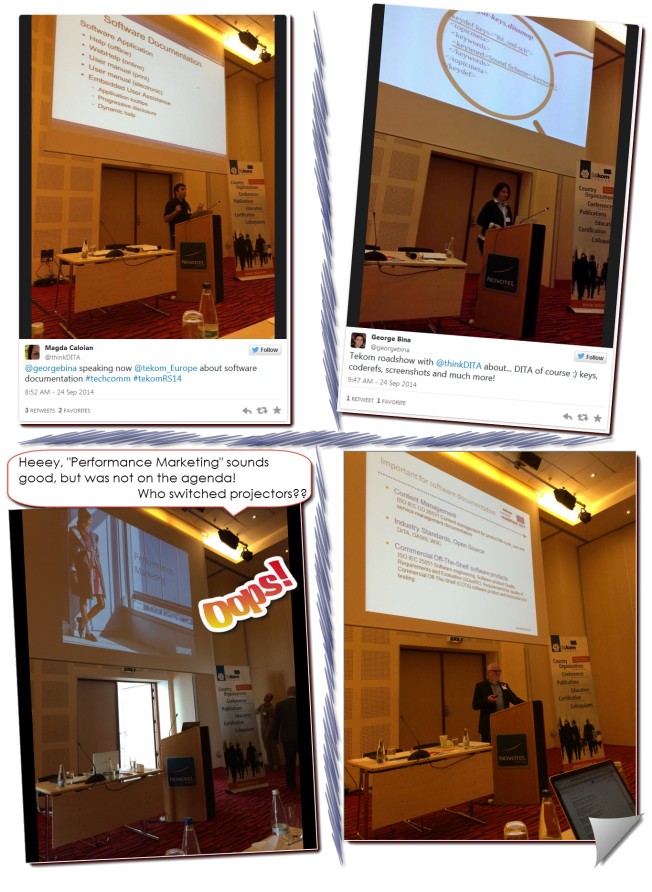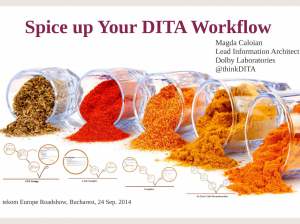The mini-tracks during Content Strategies 2016/ DITA North America have shown DITA development in so many fields of content and communication:
- Lightweight DITA
- Taxonomy
- Video
- Translation
- Learning and Training
- Medical Industry
- DITA for the Machine Industry
The spirit of DITA, as Michael Priestley reminded us in one of his presentations, is to ADAPT. The more options and tools are emerging, the more ways there are to connect and grow towards Enterprise Content Management, to consolidate, coordinate, collaborate on common content across departments.
From one track to the other, conference attendees could learn about minimal content models that “can still go crazy” (Michael Priestley), ditamaps handling decision points as a dynamic flow (Chris Nitchie), cross-format content in ditamaps (Carlos Evia), shaping the content with taxonomy (Joe Pairman), card-based content authoring and delivery (SAP), simple DITA format for translation (George Bina), augmented linguistic review (WhP).
To encourage even more teams to adopt DITA, I presented the model2dita project and was glad to see it struck a chord, just as it did last November at DITA Europe in Munich.
model2dita: Generate your DITA project structure from the information model
What is your process when you start a new documentation project in DITA? How do you decide on the content and by which magic does it turn into DITA topics and maps? To develop effective, user-oriented information, you should invest most of your time in researching your audience and in task analysis rather than clicking New > File > Map, New > File > Topic and dragging topicrefs…
New DITA writers often find it difficult to envision the transformation of the information outline to the actual DITA structure. Others don’t even have the habit of starting with an information model in the research phase of a project.
The prezi shows the importance of the modeling phase in the writing workflow, as well as some methods and tools for translating the model into a DITA project structure automatically.
Moreover, I owe a hat tip to Paul Zimmerman (CISCO) for mentioning my last year’s project, rst2dita, about markdown round-tripping in his presentation “Get to Gittin’ On: Integrating code and content management in Git“.
Touring Reston, VA and Washington, DC was remarkable. See you all again in Munich in November.


